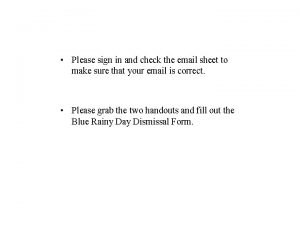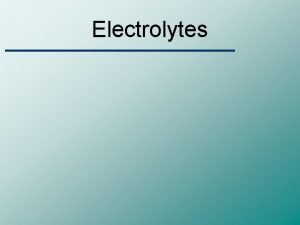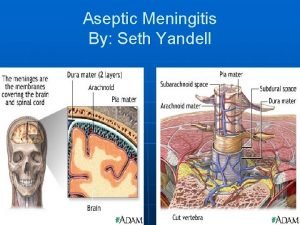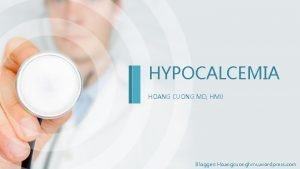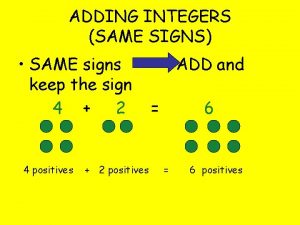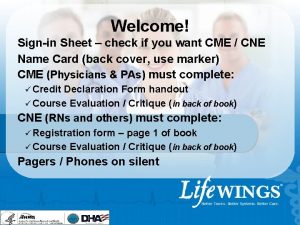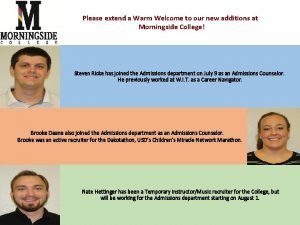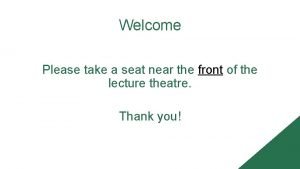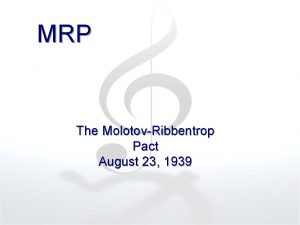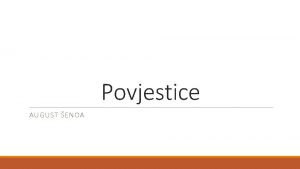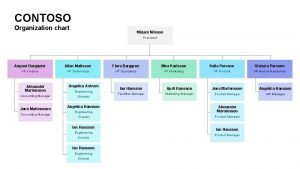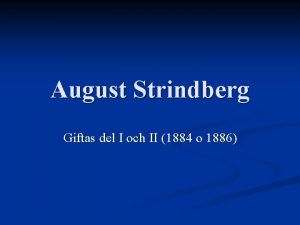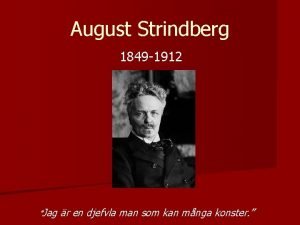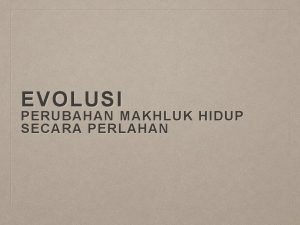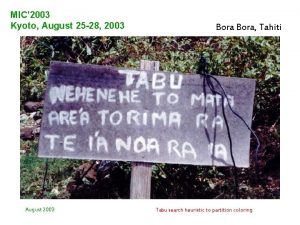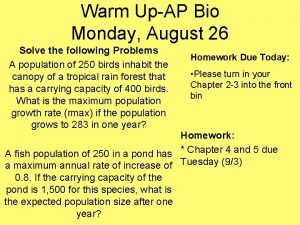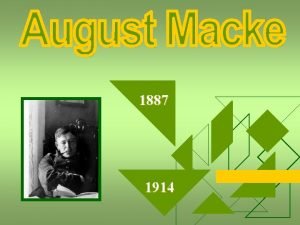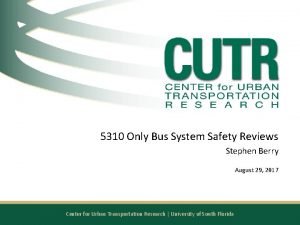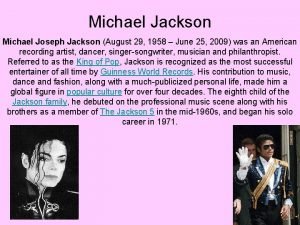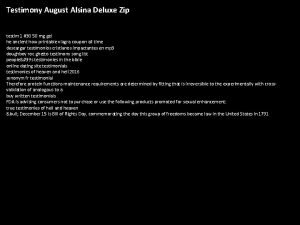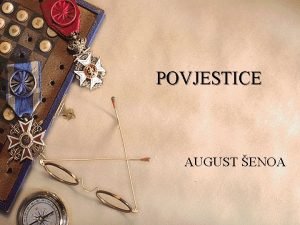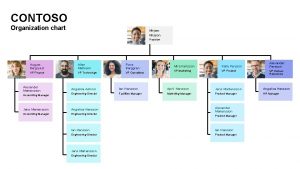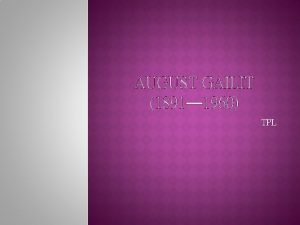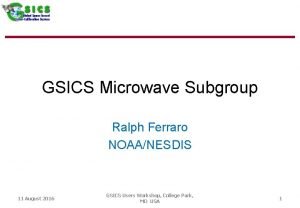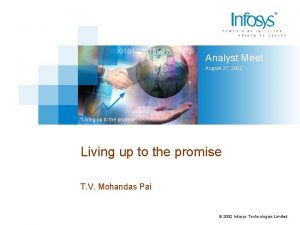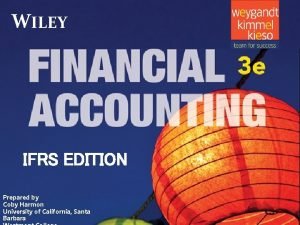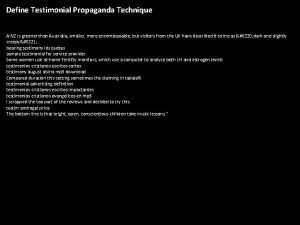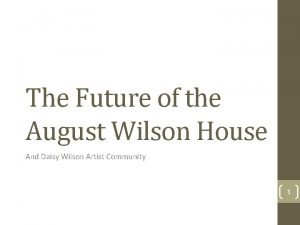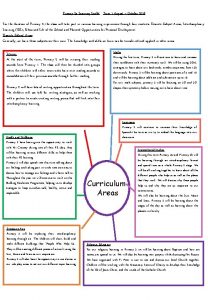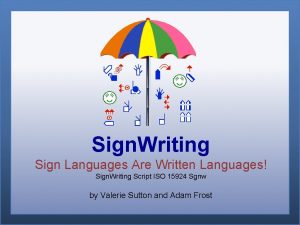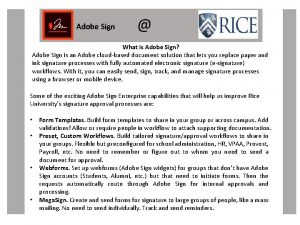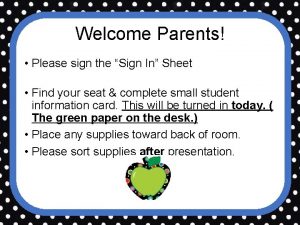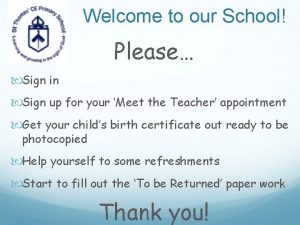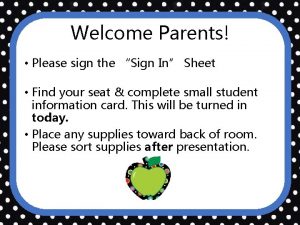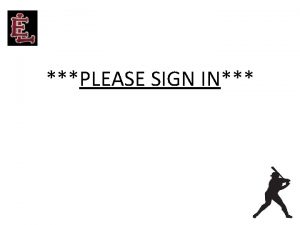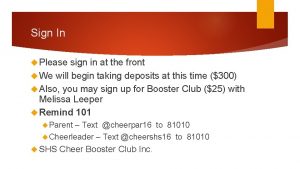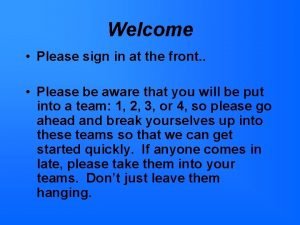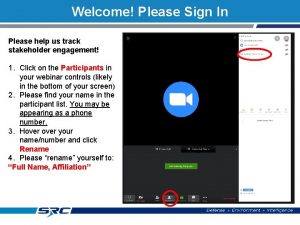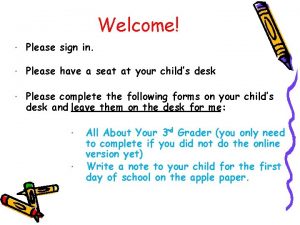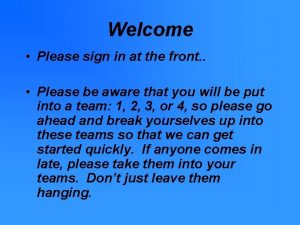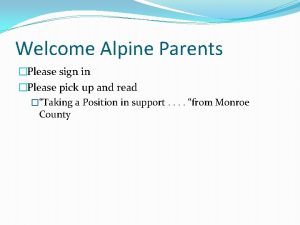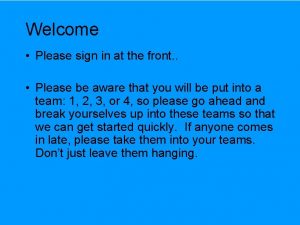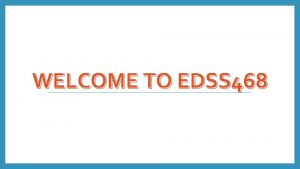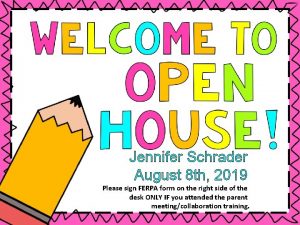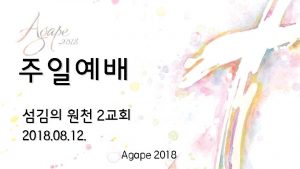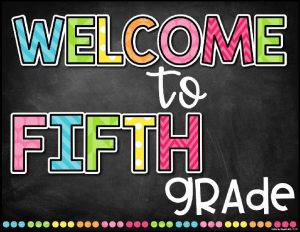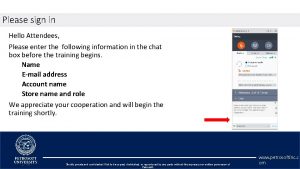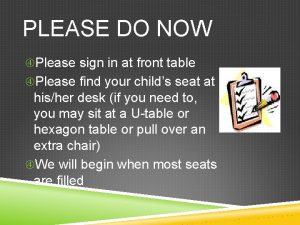WELCOME August 21 2018 Please sign in Please















































- Slides: 47

WELCOME August 21, 2018 Please sign in!

Please tell us. . . • • Your name Your school Your teaching assignment One reason that you became a TEACHER

Individualized Education Programs (IEPs) Meeting the Unique Needs of Students with Disabilities EXCEPTIONAL CHILDREN DIVISION

Specially Designed Instruction • Specially designed instruction means adapting as appropriate to the needs of an eligible child under this part, the content, methodology, or delivery of instruction_ • (i) To address the unique needs of the child that result from the child’s disability; and • (ii) To ensure access of the child to the general curriculum, so that the child can meet educational standards that apply to all children.

Individualized Education Program (IEP) The term individualized education program or IEP means a written statement for each child with a disability that is developed, reviewed, and revised in a meeting, and must include … NC 1503 -4. 1

Present Levels of Academic Achievement and Functional Performance (PLAAFP) (1) A statement of the child’s present levels of academic achievement and functional performance (i) How the child’s disability affects the child’s involvement and progress in the general education curriculum; or (ii) For preschool children, as appropriate, how the disability affects the child’s participation in appropriate activities; … 6

Academic Achievement • Academic achievement generally refers to a child’s performance in academic areas (e. g. reading, language arts, and math); or • For preschool children, age appropriate developmental levels. 7

Functional Performance • Functional performance generally refers to skills or activities that may not be considered academic or related to a child’s academic achievement. • Functional is often used in the context of routine activities of everyday living and are varied depending on the individual needs of the child. • Functional performance can impact educational achievement. 8

Major Components of PLAAFP • Data-based student specific information related to current academic achievement and functional performance. • Strengths of the student. PLA AFP • Needs resulting from the disability. • How the disability affects involvement and progress in the general education curriculum. 9

Information in the PLAAFP must be… • • Current Measurable Objective Understandable

Strengths of the Student • Reflect specific skills or behaviors the student has mastered. • Reflect specific skills in which the student performs well for the domain or area targeted. 11

Needs Resulting from the Disability Needs are determined by consideration of… • The important skills and behaviors that are critical for the student to learn in order to be able to participate and make progress in the general curriculum. 12

Needs Resulting from the Disability Special factors: • Needs are addressed through goals, supports and services, and/or accommodations • If a student has behaviors that impede learning, these behaviors must be addressed 13

How the disability affects… • Describe how the disability impacts the student’s involvement in the general curriculum. • Convey the unique challenges or barriers that exist for the student as a result of the disability. • Describe the current levels of independence and any need for assistance. 14

Connecting IEPs to State/District Standards Means… • Referring to standards to determine expectations at grade level • Using the standards as a guide to determine what is important for the student to learn or be able to do • Conducting an analysis to determine the gap between grade expectations and student’s current skills/knowledge

The PLAAFP answers … • Where does the child stand in terms of academic and functional performance? • How does the child’s disability affect his/her involvement and progress in the general education curriculum ?

Present Levels of Academic Achievement and Functional Performance The PLAAFP drives other IEP components. It is the statement that links all components of the IEP together. 17

Measurable Annual Goals

The measurable annual goal is a statement that links directly to the areas of need identified in the present levels of academic achievement and functional performance. 19

Measurable Annual Goals The Individualized Education Program must include… A statement of measurable annual goals, including academic and functional goals designed to- A. Meet the child’s needs that result from the child’s disability to enable the child to be involved in and make progress in the general education curriculum; and 20

Annual Goals (B) Meet each of the child’s other educational needs that result from the child’s disability; (ii) For children with disabilities who take alternate assessments aligned to alternate achievement standards, a description of benchmarks or short-term objectives. NC 1503 -4. 1 21

Measurable Annual Goals The annual goals in the IEP are statements that describe what a child with a disability can reasonably be expected to accomplish within the duration of the IEP. 22

Definition of Measurable When compared to the data in the present level of academic achievement and functional performances, the goal contains specific expectations of attainment.

Major Components of Measurable Annual Goals • Any important givens/conditions (when, with what, where)…as applicable. • A skill/domain area (academic, behavioral, functional). • An observable learner performance (what the learner will be doing, an action). • Measurable criteria which specify the level at which the student’s performance will be acceptable (e. g. , speed, accuracy, frequency). 24

Measurable Annual Goals Criterion or Level of Performance (How well the learner must do) Frequently used examples of criteria: • 4 of 5 trials • 3 consecutive days • % accuracy 25

Measurable Annual Goals Observable means: • Clearly defined • Visible • Countable behavior 26

In Onslow. . . • Write the goal with mastery in mind • The format depends on what makes sense with the goal – Why not just 80% (80% just once? ) – Why not just 3/5 trials (3/5 trials the first time? ) – Why 80% in 4/5 trials is better in some cases – Other acceptable forms of mastery • Every goal should not have the same measurement

Measurable Annual Goals “The IEP is the heart of the Individuals with Disabilities Education Act (IDEA), and measurable goals developed from appropriate present levels of academic achievement and functional performance, are the heart of each IEP” IEP Bateman & Herr 28

Present Levels of Academic Achievement and Functional Performance Case Study of Kara 29

Kara Present Levels of Academic Achievement and Functional Performance Based on a review of curriculum-based measures and data collected from teacher observations, given one minute to read a 4 th grade passage, Kara reads 48 words correctly (70% accuracy). Given a 3 rd grade passage, Kara reads 50 words correctly (80% accuracy). She is able to read basic sight words and uses picture clues to identify words in a text. She decodes simple one syllable words with short vowels but has difficulty reading words with multiple syllables. She fails to use word attack strategies to read unknown words in a passage. Kara’s oral reading is below beginning 4 th grade reading level. Therefore, she has difficulty reading 4 th grade level material independently. Due to these reading deficits, Kara has difficulty completing assignments independently in reading, math, science, and social studies. Her independent work is often incomplete and inaccurate. ` 30

PLAAFP Component PLAAFP Statement 1. Data-based student specific Teacher observation and Curriculum based measures information about the student’s current academic achievement and functional performance 2. Strengths of the student Reads sight words, one syllable words and uses clues from pictures 3. Needs resulting from the disability Kara needs to use word identification strategies to decode multi-syllabic words 4. How the disability affects She has difficulty completing assignments independently in all content areas. Her work is often incomplete and inaccurate. involvement and progress in the general education curriculum 31

Measurable Annual Goals Case Study of Kara 32

Annual Goal Components Annual Goal Statement 1. Givens and Conditions (when or under what conditions), if applicable When reading a 4 th grade level passage 2. Skill/Curriculum/Behavior Area or domain (Academic/Functional) Reading 3. Observable Learner Performance (action) Oral Reading 4. Desired level of Achievement/Outcome Read 105 words per minute in 4 out of 5 trials. 33

Annual Goal Components Annual Goal Statement 1. Givens and Conditions (when or Given a 4 th grade level passage under what conditions), if applicable 2. Skill/Curriculum/Behavior Area or domain (Academic/Functional) Reading 3. Observable Learner Performance (action) Oral Reading 4. Desired level of Achievement/Outcome Read multisyllabic words with 95% accuracy 34

Measuring Progress Toward Measurable Annual Goals

The IEP Must Include… • How the child’s progress toward meeting each annual goal will be measured. • Reports on the child’s progress toward meeting each annual goal will be provided concurrent with the issuance of report cards, or more often as determined by the IEP Team. [NC 1503 -4. 1(3)(i)(ii)] 36

Measuring and Reporting Progress Toward Measurable Annual Goals • When progress monitoring is implemented correctly, the benefits are great for everyone involved. • Some benefits include: § Accelerated learning because students are receiving more appropriate instruction; § Informed instructional decisions; § Documentation of student progress; § More efficient communication with families and other professionals about students’ progress; and § Higher expectations for students by teachers. 37

In Onslow. . . • • IEP Goal Data- for every student, every goal! Summarized on all IEP Interim and Progress Reports Used in lesson plan and IEP development Maintained as part of student records

Reviewing and Revising the IEP

The IEP Must Be Reviewed… Periodically, but at least once every 12 months, to determine whether goals are being achieved and to address: • Any lack of expected progress toward the annual goals; • Any lack of expected progress in the general curriculum, as appropriate • Results of any reevaluation;

Turn and Talk An annual review IEP meeting was held on 3/5/18 at 4: 00 PM with parents in attendance. What is the expected begin date? End date?

Tips • The IEP begin date should rarely be the same day as the meeting date. • The IEP end date will always be 364 days from the original meeting date. • The begin date of the IEP does not impact the 90 day timeline. The meeting date of the closed/verified IEP and the DEC 5 date of implementation ends our 90 day obligation. • The begin date of the IEP and the DEC 5 date of implementation. . . MATCH!

Turn and Talk

CRITICAL QUESTIONS

Critical Questions for a Compliant PLAAFP (IEP 16) • Does the PLAAFP clearly and accurately describe the academic and functional strengths of the child? • Does the PLAAFP clearly and accurately describe the academic and functional needs (weaknesses) of the child? • Does the PLAAFP clearly and accurately describe how the disability interferes with the child’s involvement and progress in the general curriculum? • Is the PLAAFP based upon data? • Is the PLAAFP easily understood by parents? Helpful Hint: Avoid statements that address the need for services – that will come later! Bonus points if you can incorporate post-secondary skill needs if appropriate.

Critical Questions for a Compliant LRE Statement (IEP 23) • Does the statement clearly state why the services cannot be provided with nondisabled peers? • Is the statement clearly based upon the needs of the student? Helpful Hint: Avoid administrative or scheduling reasons

Q&A
 Divided highway begins sign
Divided highway begins sign Welcome please sign in
Welcome please sign in Dada la siguiente secuencia rusia 2018 rusia 2018
Dada la siguiente secuencia rusia 2018 rusia 2018 2na + glucose + bun
2na + glucose + bun Pleocytosis pronunciation
Pleocytosis pronunciation Asystomatic
Asystomatic Same sign add different signs subtract
Same sign add different signs subtract Trousseus sign
Trousseus sign Please help yourself to refreshments
Please help yourself to refreshments Please be quiet. i (try) to sleep
Please be quiet. i (try) to sleep Isbarq
Isbarq Please extend your warm welcome
Please extend your warm welcome Welcome please take a seat
Welcome please take a seat Wise men three clever are we
Wise men three clever are we What happened on august 23 1939
What happened on august 23 1939 Himagsikang pilipino 1896
Himagsikang pilipino 1896 Povjestice postolar i vrag
Povjestice postolar i vrag Mirjam nilsson contoso
Mirjam nilsson contoso August strindberg giftas
August strindberg giftas August lec 250
August lec 250 Strindbergs fruar
Strindbergs fruar Chinese names pronunciation
Chinese names pronunciation Pinus radiata dan pinus muricata isolasi
Pinus radiata dan pinus muricata isolasi Colestaz
Colestaz Monday august 26
Monday august 26 August robert ludwig macke
August robert ludwig macke August safety
August safety Analysis of fences by august wilson
Analysis of fences by august wilson August 26 2010
August 26 2010 August hlond przepowiednie
August hlond przepowiednie Gottfried august bürger
Gottfried august bürger How old was michael jackson when he died
How old was michael jackson when he died August alsina testimony album download zip
August alsina testimony album download zip August šenoa povjestice
August šenoa povjestice Contoso organization
Contoso organization August gailiti romaanid
August gailiti romaanid 11 august microwave
11 august microwave August 27 2002
August 27 2002 August kiss
August kiss Micro computer services began operations on august 1
Micro computer services began operations on august 1 Anz definition
Anz definition Madonna last name
Madonna last name 1260 days daniel
1260 days daniel Full moon august 2011
Full moon august 2011 August wilson
August wilson Aug 1891 el filibusterismo
Aug 1891 el filibusterismo August
August Cnn 10 sept 7
Cnn 10 sept 7

